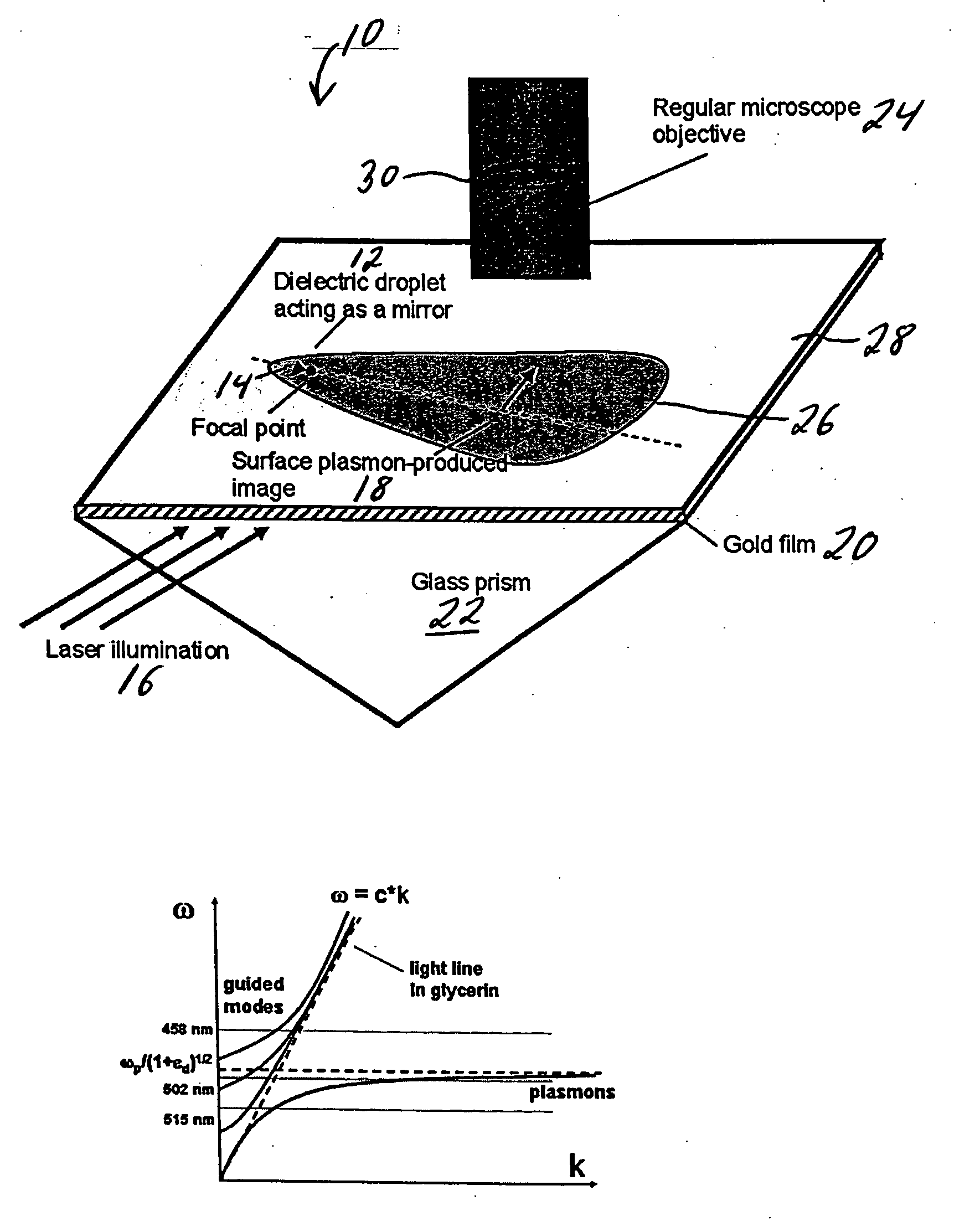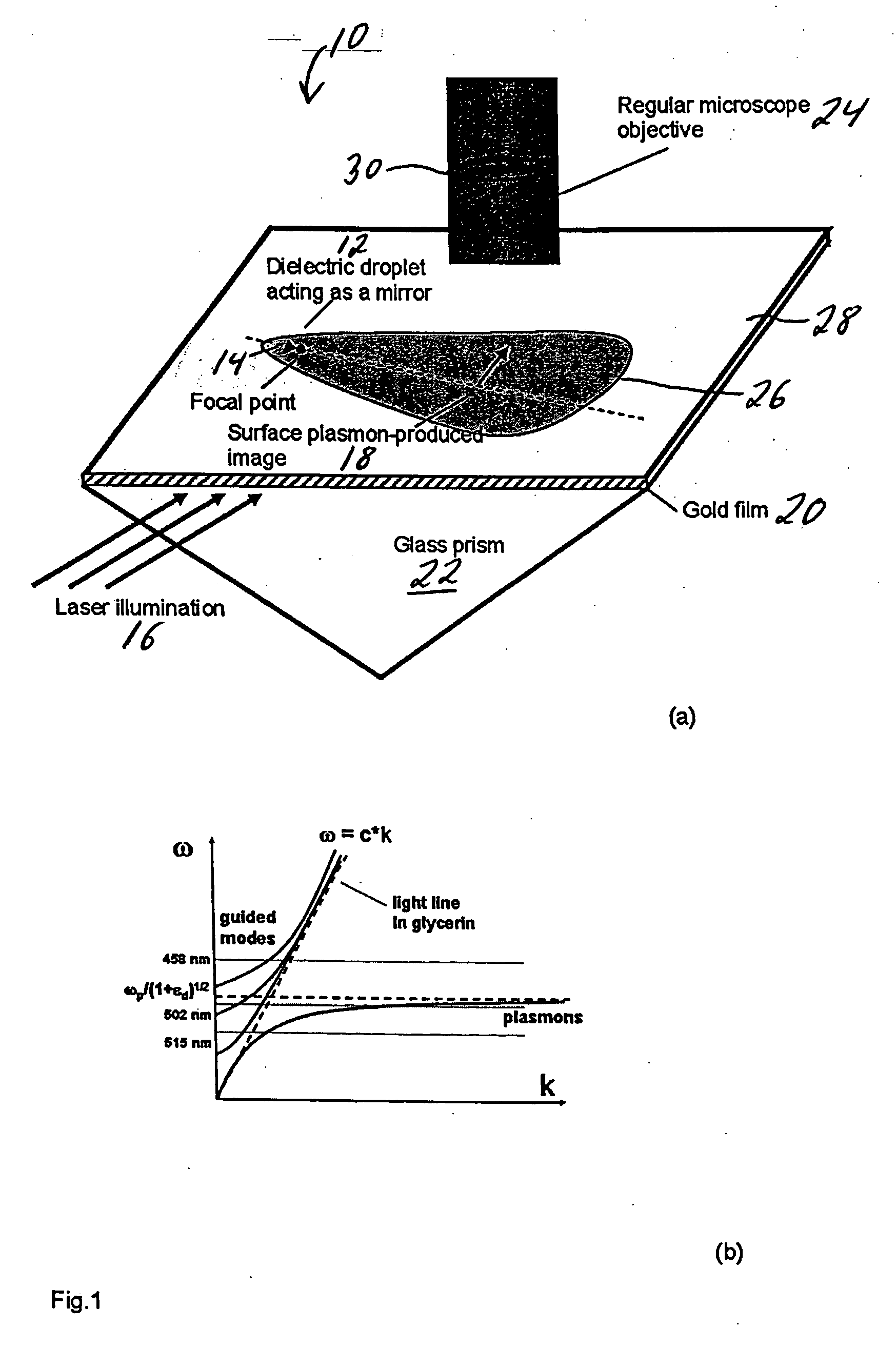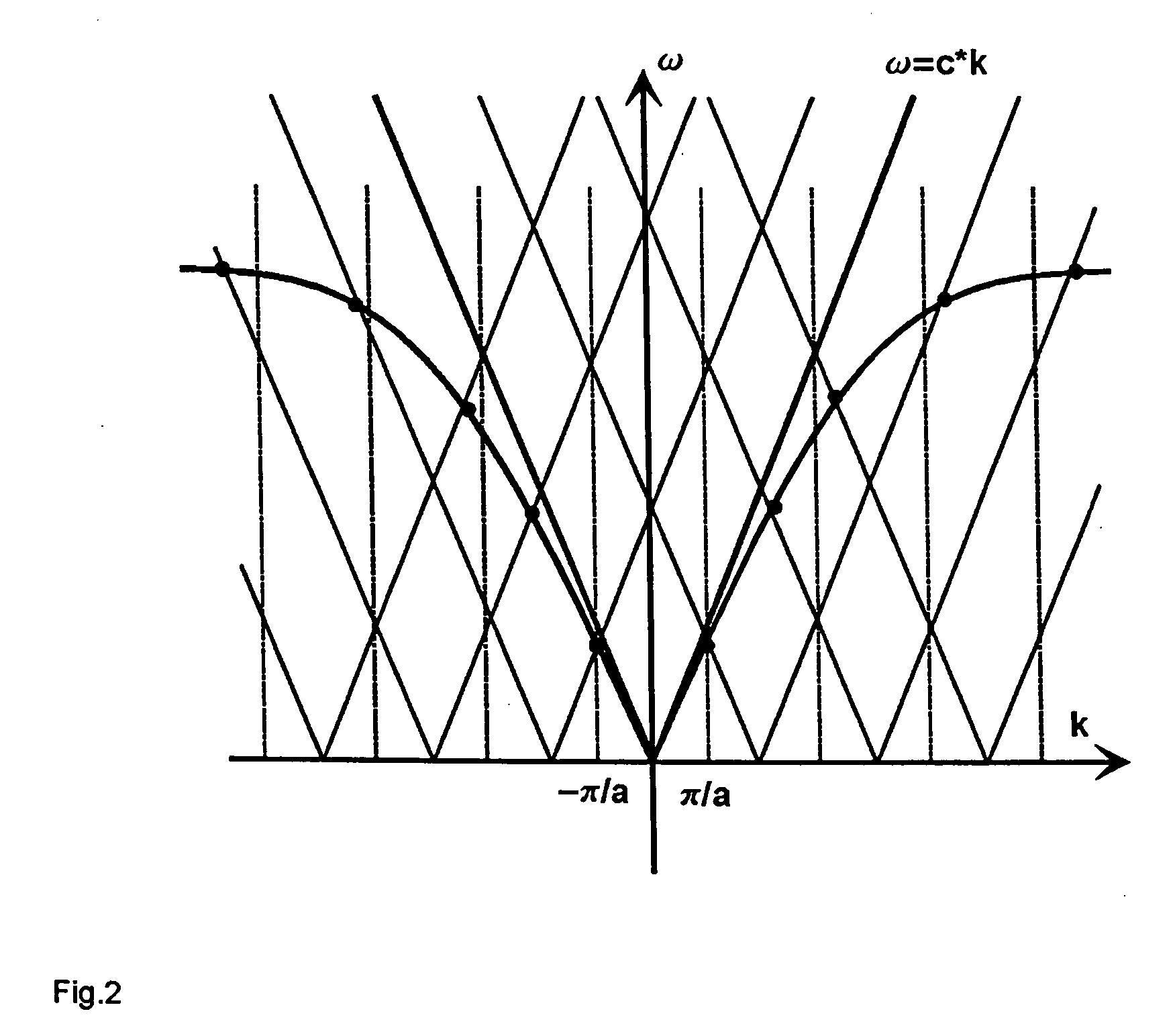Far-field optical microscope with a nanometer-scale resolution based on the in-plane image magnification by surface plasmon polaritions
a far-field optical microscope and in-plane image technology, applied in the field of optical microscopy, can solve the problems of limited resolution of regular optical microscopes, limited range of refractive indexes of immersion microscopes, and inability to use microscopes as versatile and convenient as regular far-field optical microscopes. achieve the effect of improving resolution and optical resolution
- Summary
- Abstract
- Description
- Claims
- Application Information
AI Technical Summary
Benefits of technology
Problems solved by technology
Method used
Image
Examples
Embodiment Construction
[0032] The present disclosure describes a far-field optical microscope capable of reaching nanometer-scale resolution using the in-plane image magnification by surface plasmon polaritons based on the optical properties of a metal-dielectric interface that may provide extremely large values of the effective refractive index neff up to 103 as seen by surface polaritons, and thus the diffraction limited resolution can reach nanometer-scale values.
I. Introduction
[0033] The wave vector of a surface plasmon propagating over an interface between a dielectric and an infinitely thick metal film is defined by the expression kp=ωc(ɛdɛmɛd+ɛm)1 / 2(1)
where εm(ω) and εd(ω) are the frequency-dependent dielectric constants of the metal and dielectric, respectively. If the imaginary part of the metal's dielectric constant is neglected, under the resonant condition
εm(ω)=−εd(ω) (2)
both phase and group velocities of the surface plasmons tend to zero. This means that the wavelength λp of such ...
PUM
| Property | Measurement | Unit |
|---|---|---|
| wavelength | aaaaa | aaaaa |
| thick | aaaaa | aaaaa |
| wavelength | aaaaa | aaaaa |
Abstract
Description
Claims
Application Information
 Login to View More
Login to View More - R&D
- Intellectual Property
- Life Sciences
- Materials
- Tech Scout
- Unparalleled Data Quality
- Higher Quality Content
- 60% Fewer Hallucinations
Browse by: Latest US Patents, China's latest patents, Technical Efficacy Thesaurus, Application Domain, Technology Topic, Popular Technical Reports.
© 2025 PatSnap. All rights reserved.Legal|Privacy policy|Modern Slavery Act Transparency Statement|Sitemap|About US| Contact US: help@patsnap.com



